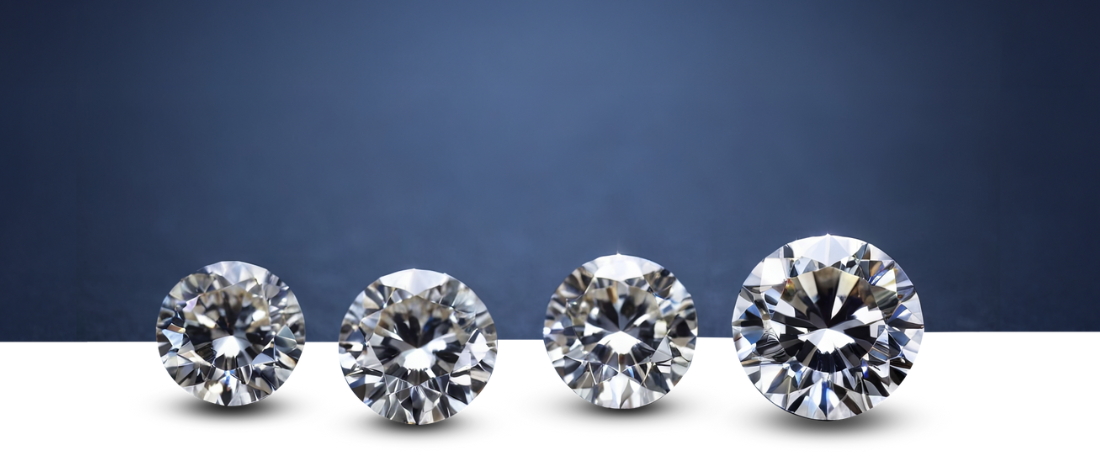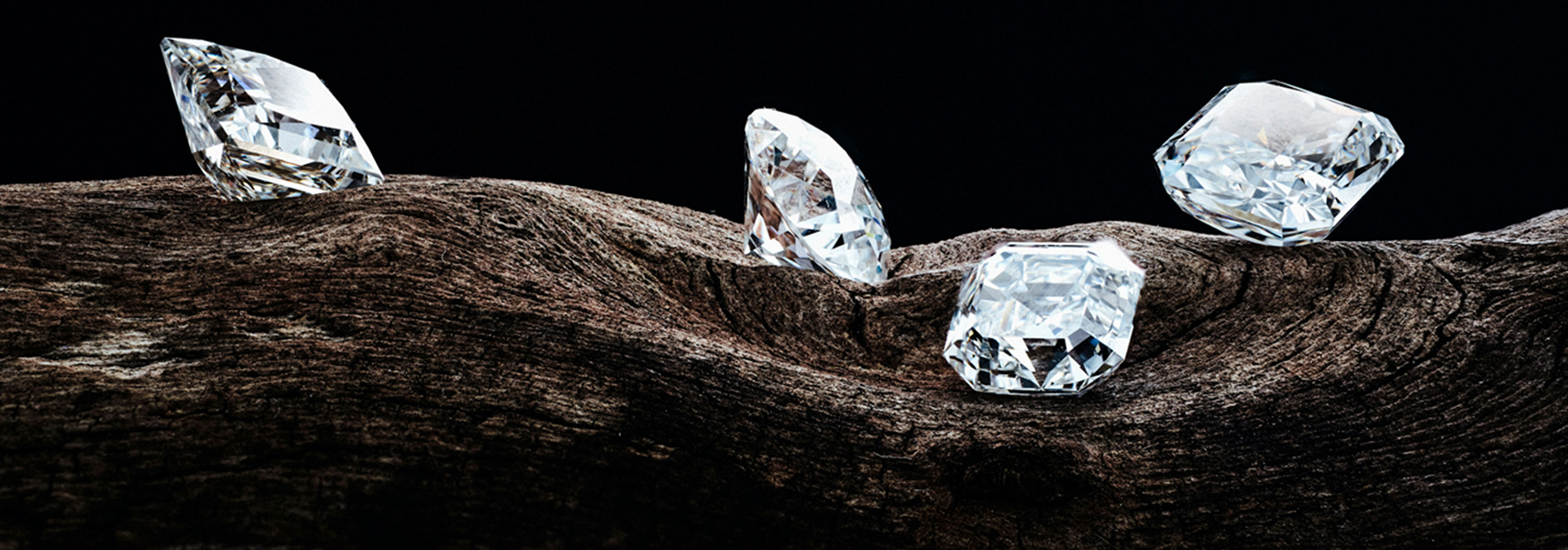Imagine that you are standing in front of a local jewelers counter looking at a beautiful diamond-ring. It is lovely but when you take a closer look, you start wondering, What makes this diamond special? As the jeweler begins to explain, you hear something called "clarity" but wonder, What does that mean?
Now this terminology may sound like one of the jargon words that are floating around among gem enthusiasts, but clarity actually represents the diamond's individuality. It's not a question of perfection, but about the rarity of the diamond like an extremely beautiful unicorn. Instead of perfection, clarity shows the slight flaws, called inclusions, which is the key for the radiant brilliance and value of that stone.
In this guide, let us break open the mystery of the Diamond Clarity Chart and learn what all those little marks really mean, how they are graded, and why they are important when choosing a diamond that's right for your style and budget. So, let's take a closer look at how clarity might change the way you view diamonds forever.
What Is Diamond Color?
Let's begin with diamond color. Diamond color is a description of how much color a diamond contains or rather how little color a diamond contains. Theoretically, the lesser the color the higher the value. However, practically, most diamonds possess faint hints of yellow or brown.
Diamonds are graded on a scale from D which is colorless to Z which is light yellow or brown. Extremely rare colorless ones cost a fortune and are very pricey. It simply shows that the less color diamond will be more clear and it is going to shine under the light more. A great diamond would reflect much light and radiate an eye-catching glint. That’s why diamond color chart becomes such an essential factor when making the correct choice for a diamond.
What is the GIA Diamond Clarity Scale

Before we go too deep into the importance of diamond colors, it is worth a good understanding of diamond clarity. Clarity is the existence of internal or external imperfections in a diamond that are called inclusions and blemishes. The GIA Diamond Clarity Scale is the industry standard for grading diamonds based on these imperfections.
The GIA scale ranges from Flawless (FL), where the diamond has no internal or external flaws that can be detected under 10x magnification, to Included (I1, I2, I3), where the flaws can be seen with the naked eye. The cleaner a diamond, the brighter it will appear.
Diamond Color Scale

Now, let's have an in-depth look at the color diamond scale, which is used in classifying diamonds through the color. The range comes in different categories from D grade in which diamond is colorless to Z grade in which diamond is light yellow or brown. Each grade defines the amount of color available in the diamond.
Let's have a quick overview of the grades:
D Color - Colorless
E Color - Colorless
F Color - Colorless
G Color - Near Colorless
H Color - Near Colorless
I Color - Near Colorless
J Color - Near Colorless
K Color - Faint
L Color - Faint
M Color - Faint
Which Diamond Color Is Best?

You could ask, "Which diamond color should I choose?" The perfect diamond color for you can be determined by a few factors like budget, preference, and for what occasion. Generally speaking, D to F color diamonds are the most costly and therefore they are highest in quality. G to J diamonds have an excellent value but still look great without the financial strain of D to F color.
In the end, the best-diamond color is the one that fits your style and budget. D-color diamonds have stunning brilliance but you can often find a near colorless G or H-diamonds that looks just as beautiful as the colorless ones, especially when set in jewelry.
How Are Clarity Grades Determined
The clarity of a diamond-rating depends on the number and size of the internal imperfections or inclusions and its external-flaws. The clearer the diamond is, the higher it will be in the diamond clarity chart. The degree to which clarity is measured ranges from the examination of a gemologist for imperfections using a magnification degree of 10x.
There are elements in the GIA Clarity Scale.
Flawless or FL: No inclusions or blemishes can be detected under a 10X magnification.
Internally Flawless or IF: Contains no internal inclusions. However, minor surface blemishes may be present.
Very, Very Slightly Included: It can be called as VVS1 and VVS2. They have minute inclusions which are challenging to detect even with magnification.
Very Slightly Included: It can be called as VS1 and VS2. Here inclusions are somewhat easy to spot under magnification but not visible to the naked eye
Somewhat Included: It can be called as SI1 and SI2. Here inclusions are clearly visible with magnification, but under some lighting conditions, it can be seen to the naked eye.
Included like I1, I2, I3: Here inclusions are observable to the naked eye and can affect the diamond's hardness and brilliance.
Colorless Diamond Grades
- D Color
D-color diamonds are considered perfectly colorless and are the most-desirable on the diamond color scale. They are rare, stunning and highly-desired which makes them the most expensive diamonds available. If you are looking for a top-tier, sparkling diamond, D-color is the way to go.
- E Color
E-color diamonds are colorless and almost indistinguishable from D-color diamonds by the naked-eye. Though they are still high end, they can be a bit more-affordable than D-color diamonds which makes them a fantastic-choice for people who want top quality without hefty price-tag.
- F Color
F color diamonds are also colorless and often fall into the "near-perfect" category. They offer exceptional brilliance and are still considered high-end but come at a slightly lower price than D or E diamonds.
Value of Colorless Diamonds
The value of colorless diamonds like D, E and F is the most valuable in the market. These are rare and have a fantastic-sparkle to them, making them luxurious and worth the premium price paid.
Near Colorless Diamond Grades
- G Color
G color diamonds are near colorless and a wonderful balance between value and beauty. They provide a tiny-hint of color when looked under closer inspection but appear nearly colorless to the naked-eye. These diamonds are perfect for people who want quality diamonds without the hefty price tag.
- H Color
H color diamonds are also near colorless and have a small amount of warmth when viewed closely. However, in most settings, they appear to be near colorless to the casual observer.
- I Color
I color diamonds are in the near colorless category and often have a hint of color which can be noticeable in larger stones. It can still look very good, especially when set in the jewelry. They offer great value.
- J Color
J color diamonds are on the borderline of the near colorless and faint category. You may find a slight yellow or brown tint, but in many settings, they still appear sparkling and gorgeous.
Near Colorless Diamond Value
Near colorless diamonds are (offer) great value. They tend to look colorless in most jewelry settings and are much less expensive than top colorless diamonds. If you want a fine diamond but don't want to spend an astronomical amount, these are good choices.
Faint Color Diamond Grades
- K Color
K color diamonds have a faint yellow or brown tint. While still considered as the perfect diamonds, the color is much more noticeable to the naked eye. They’re more affordable and can look beautiful, especially in lower-carat stones.
- L Color
L color diamonds show a more prominent yellow or brown color. They are typically the least expensive, if you are looking for a budget friendly option. However, they are still a solid choice for smaller stones.
- M Color
M color diamonds have the most visible yellow or brown tint. These are the most affordable when considering (on) the diamond color scale but have a color that the naked eye can see, especially when they are larger.
Value of Faint Color Diamonds
The faint color diamonds are K, L, and M. These are the least expensive types for budgets. The color is visible but still possesses an element of individuality in the charm they provide depending on cut and setting.
Conclusion
You should not choose a diamond based on the size of the gem as color and clarity have huge roles within the beauty and value. Whether you aim for an expensive colorless D-color diamond or a bit less expensive H or I colored options, it all comes back to what each diamonds means and what you like based on your personal style or budget. With all these diamond clarity chart information, you are now ready to choose the ideal-diamond for you.
FAQs
What is the variation between diamond color and diamond clarity?
Color is the presence of a color in the diamond. Clarity is an indication of the existence of internal or external imperfections.
Is buying a D-color diamond worth it?
D-color diamonds are the very finest and the rarest, but you can get an amazing value with near colorless diamonds like G or H that look almost as good.
Do diamonds that are clearer sparkle more?
Yes! Diamonds with higher clarity grades tend to sparkle more as there are fewer inclusions to block light.
How to determine whether the color of your diamond is suitable for your needs?
It all depends on your personal-preference and budget. If you really love the idea of a colorless diamond, go for D, E or F. If you are okay with a bit of warmth, G, H or even I are great-choices for you.
Can the clarity of a diamond be improved?
No once a diamond is cut, its clarity is set in stone. However, some inclusions are less noticeable depending on the diamond's cut and setting.
Are diamonds with faint color less valuable?
Yes, diamonds with faint color (K, L, M) are generally more affordable because the color is noticeable to the naked eye.










